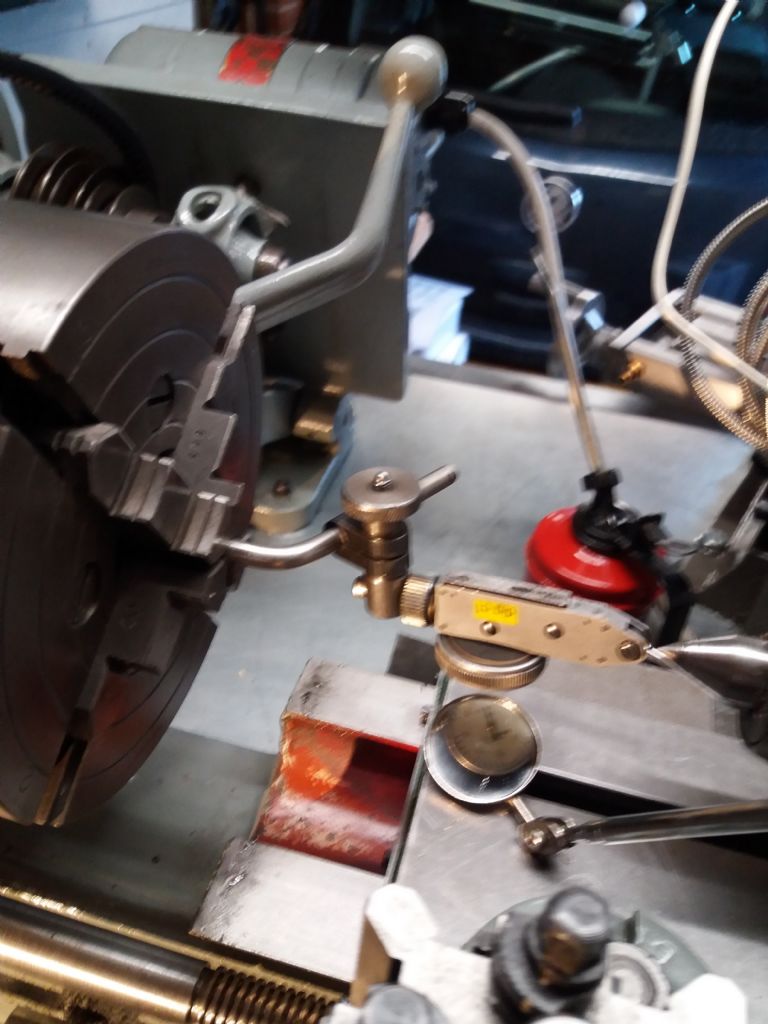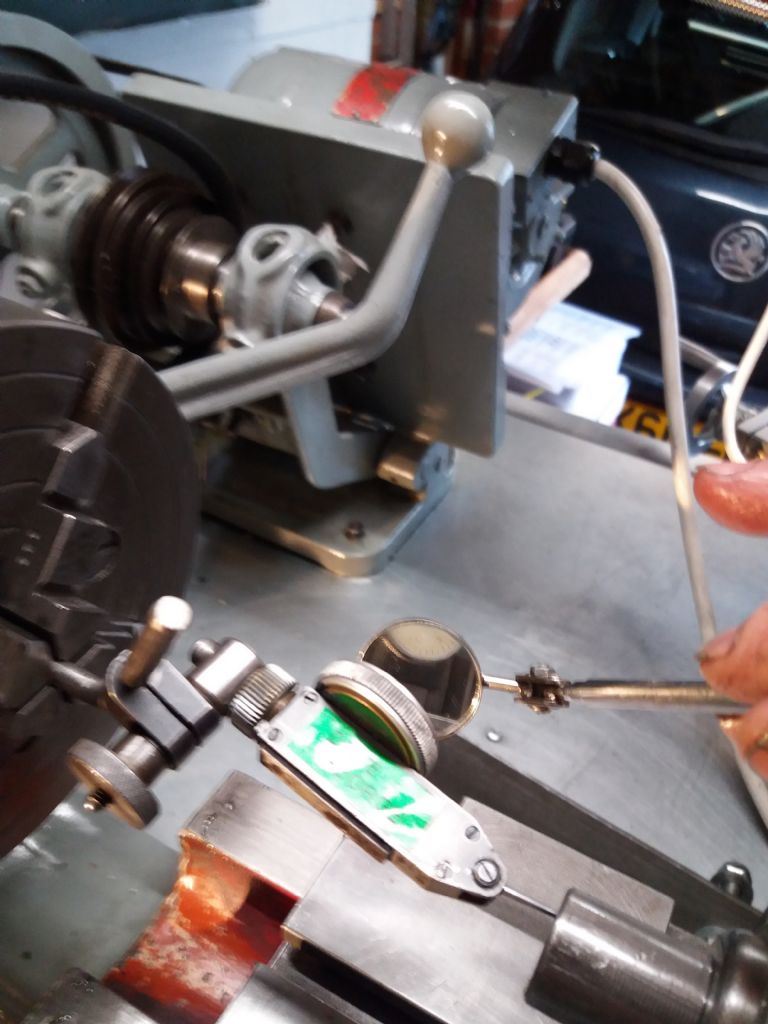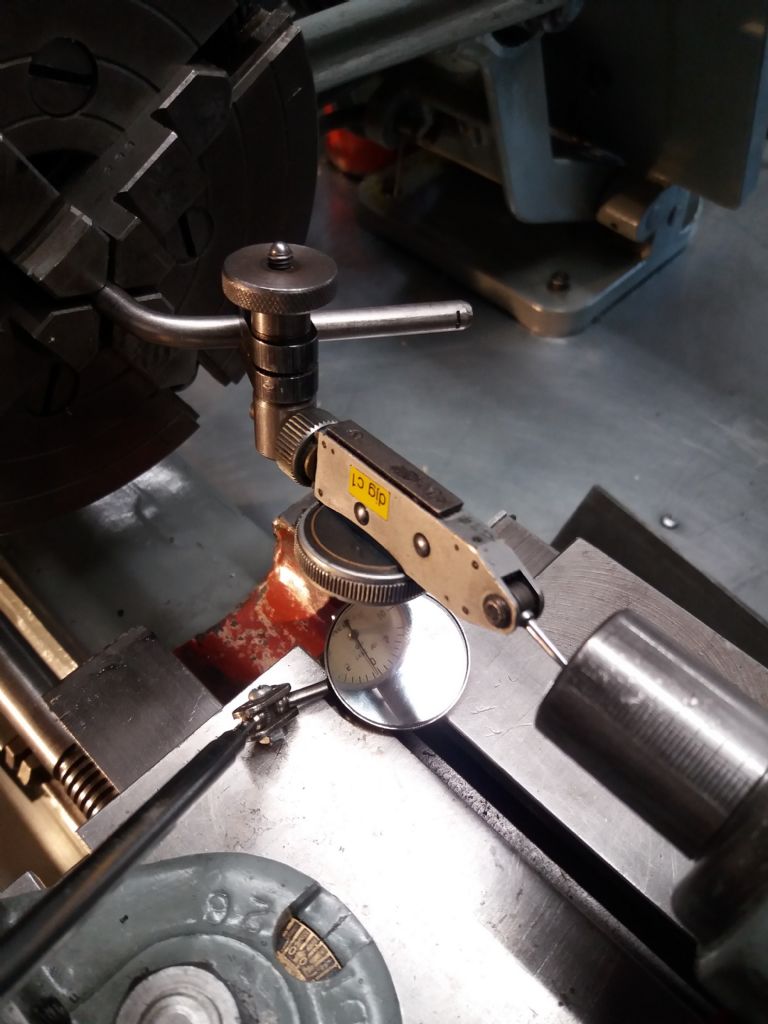OK so now we have moved from simple tailstock alignment to complete alignment of a freshly rebuilt machine.
You really should get that series of articles in MEW as it walks you through the process. (Well one way of doing the process!)
Has the bed been reground, or is it a used bed with a few thou of wear along it?
The problem I have with using a test bar is that spindle tapers over the years can become distorted and hold the bar a bit cockeyed. But you could use it to get initial alignment, followed by a turning test as described.
But headstock alignment and bed twisting are parts of the same thing, ie aligning the headstock spindle with the bed ways.
So in your case, having changed the bed — I believe? — you will need to start from scratch. First thing to do would be to bolt the lathe down to a solid bench in its "natural" position. That is, tighten down the two base bolts at the headstock end. Then use a feeler gauge to see if one of the tailstock end mounting pads has a gap under it. If there is a gap, cut a shim to fill it. Then tighten down the two bolts at the tailstock end.
To make sure you are not distorting the bed in this process, before starting, hold a 12" length or similar of 1" round bar in the chuck. Stick a dial indictator on the far end, with magnetic base direct on the lathe bed. The indicator should be set to measure movement in the horizontal plane, ie laid down sideways. The needle on the indicator should not move during tightening up the bolts. If it does, you need a shim under the foot that causes movement when bolted down. If your lathe has the Myford raising blocks with the adjustable mounting nuts, simply screw the nuts up to kiss the base of the and tighten down the top nuts to secure, while watching the dial indicator.
So now you have the bed sitting in its "natural" position. The purists (who will surely arrive at the gate shortly with pitchforks and torches) would use an expensive precision level to check both ends of the bed are at the same reading to ensure there is no twist in it. But if your bed has a few thou of wear on the top surfaces the super sensitive level's reading will be thrown out anyhow. Plus the top surface is not critical in getting a Myford to turn true. That is the vertical surface that the guide on the carriage runs against. And it can be worn differently again from the top surface. Plus it is simply overkill.
So, with the bed in its "natural" position, you can then do the headstock alignment using the jacking screws to get the headstock set straight in relation to the bed ways. You can do this with a tapered test bar if you trust the spindle's internal taper, or there are several just as good methods using your piece of 12" x 1" plain round bright mild steel bar. One way is to set it in the four jaw chuck and get the chuck end running true. If you only have a three jaw, do the best you can. It's not super critical at this stage. Then measure runout on the far end and set the high point at the 12 o'clock position. You can now mount dial indicator in the toolpost with the horizontal plunger set against the side of the bar . Run the carriage back and forth and observe dial indicator. Adjust headstock screws — and add shims if needed, or scrape some metal off — to get a zero to zero reading from one end of bar to the other.
Another was using a plain piece of steel bar is the infamous "Rollie's Dad's lathe alignment" method. You can google that. But it's just a more complex way of doing the above. But it works well and many people love it.
THEN you can do the final adjustment by taking a test cut over a 4" to 6" length of 1" bar held in the chuck and measure it for taper. Adjust the tailstock end mounting feet to get a perfect 0-0 reading on a normal .001" resolution mike. Or within a visual couple of tenths of a thou anyway. It does not take much adjustment of the feet to make a difference of a few thou on that taper. The last few tenths can be achieved by tightening down the bolt or nut without removing shim or moving the adjuster below it. Play with it and you will soon see.
Re the double ended taper from a wood lathe for setting tailstock: metal lathe tailstocks are often made to sit a few thou higher than the spindle to allow for wear so might not work. Or it might work. But you still need to do a between centres turning test as the final proof. An easier way is to mount a centre in the tailstock and turn a 60 degree point on a piece of bar held in the lathe chuck. Bring the points together and observe the alignment. A thin steel rule nipped between the two points will sit cockeyed if alignment is out. Correct alignment is when rule sits dead square to lathe axis in both horizontal and vertical planes.
So once you have got it all perfect, the next time it rains and the concrete slab floor your lathe bench is mounted to floats around in the sodden ground a bit, it could be anywhere. Or if the sun shines and the temperature changes.
So in future if you are doing a super precision job, especially of a longer length, do a test cut first and adjust your lathe to suit if required.
Edited By Hopper on 11/04/2020 03:47:23
Edited By Hopper on 11/04/2020 04:09:24
Bruce Stephenson.








